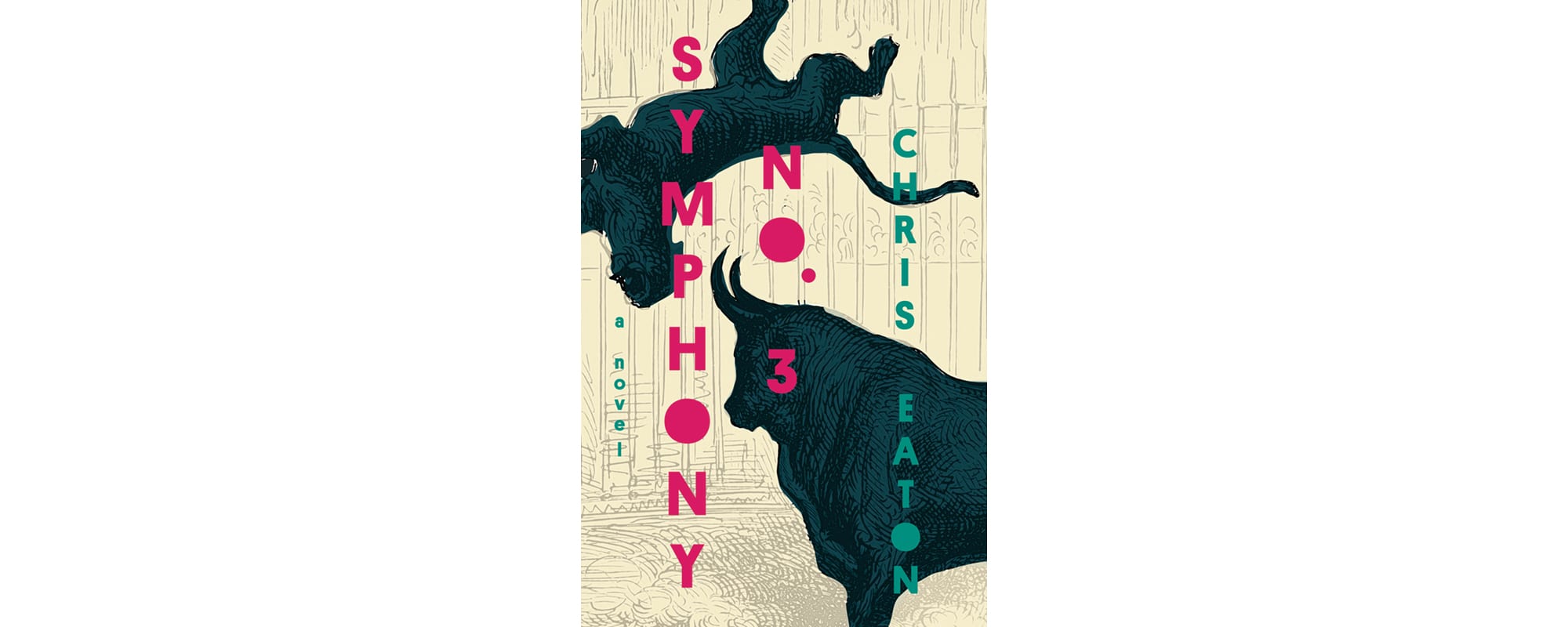 The latest from New Brunswick novelist and musician Chris Eaton is a mythopoeic biography of Camille Saint-Saëns as relayed by the Romantic composer’s fictional twin, a figure we quickly come to regard not as a genuine character but a device that grants Eaton both a uniquely privileged perspective and a narrative voice capable of delivering an unrelenting battery of fireworks that leaves the reader dazzled and exhausted. Every page of Symphony No. 3 – named after one of Saint-Saëns’s most revered works – brims with evidence of the author’s arduous research, formal provocations, and determination to superimpose historical events on our present day’s most urgent concerns. It’s intended as neither mere praise nor outright dismissal to state that novels are rarely infused with this combination of piercing intelligence and flights of tedium.
The latest from New Brunswick novelist and musician Chris Eaton is a mythopoeic biography of Camille Saint-Saëns as relayed by the Romantic composer’s fictional twin, a figure we quickly come to regard not as a genuine character but a device that grants Eaton both a uniquely privileged perspective and a narrative voice capable of delivering an unrelenting battery of fireworks that leaves the reader dazzled and exhausted. Every page of Symphony No. 3 – named after one of Saint-Saëns’s most revered works – brims with evidence of the author’s arduous research, formal provocations, and determination to superimpose historical events on our present day’s most urgent concerns. It’s intended as neither mere praise nor outright dismissal to state that novels are rarely infused with this combination of piercing intelligence and flights of tedium.
Symphony No. 3 opens puzzlingly with a bravura rant about how everyone is either a lion or a camel, an assertion characteristic of our narrator’s tendency toward declaration and digressions that are not consistently engaging. After introducing himself with full knowledge that he will one day be dismissed as imaginary – the metafictional winking is brief – our narrator begins to chronicle his famous sibling’s rise from Parisian child prodigy to superstar composer, globetrotting adventurer – Italy, Algeria, Spain, India, and Argentina are all part of the itinerary – and witness to sundry scenes of historical tumult.
Saint-Saëns’s life bridged the 19th and 20th centuries and Symphony No. 3 seems to touch on every innovation and rupture of the era, using them as mirrors for our contemporary torrent of crises: terrorism, migration, xenophobia, inequality, technological alienation. Yet for all its political vision, the novel’s real engine is sentimental, with Saint-Saëns longing for Henri, his artist lover who met a tragic demise. Saint-Saëns is probably most famous for his “Danse macabre”; Symphony No. 3 echoes that work’s lush morbidity in its hero’s journey to trace his dead paramour’s peripatetic wanderings and the sites of his inspirations. It is quite moving when our narrator describes the way he and Saint-Saëns begin to imagine secret figures hiding within Henri’s sketches.
Depicting – among many, many other things – creative challenges, the destructive religiosity of colonialist conviction, hot gay sex, bullfighting, protest and violence within the French labour force, the Franco-Prussian War, the advent of the phonograph, some dubious ideas about the art of interviewing, and conversations about the purpose of art and hierarchy of art forms, most everything in Eaton’s teeming tapestry is indiscriminately momentous. The book’s page count isn’t especially intimidating, but the maximalism never stops, except for those rare occasions when Eaton seeks the impact of a single poignant phrase surrounded by white space. When our narrator is on a roll, he assumes rhythms and repetitions that take on a kind of bludgeoning lyricism. When he pauses for a breath, the statements that bring his protracted chronicles to a close can be blindsidingly affecting, as well as a source of relief.
 Contact us via email
Contact us via email
